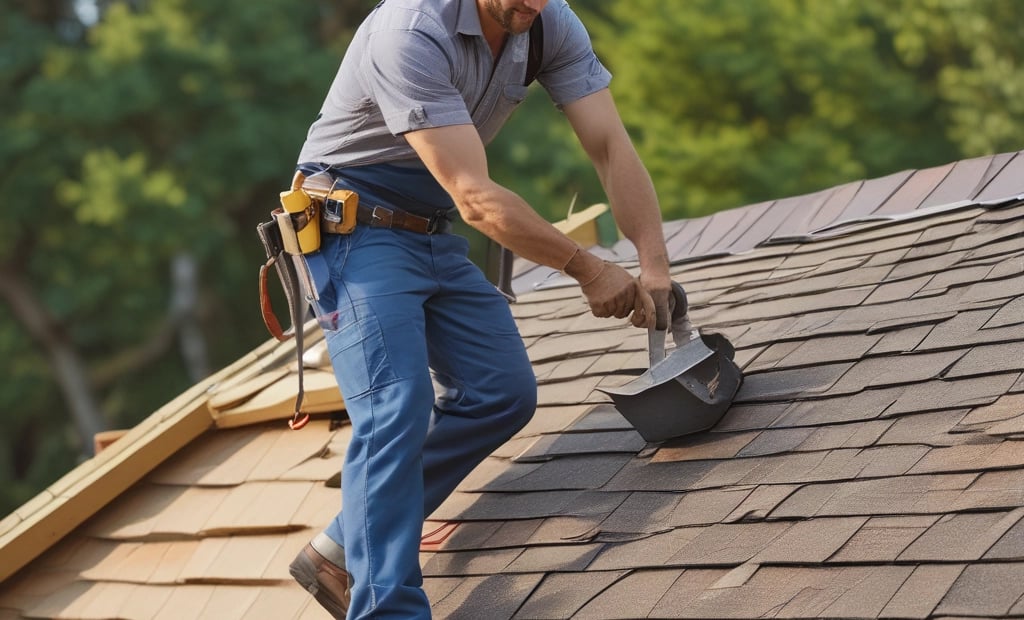Roof Leaks: Causes, Detection & What to Do Next
A roof leak might seem like a minor inconvenience—until water stains spread across your ceiling or mold begins to grow in your attic.
ROOFING
7/17/20252 min read


A roof leak might seem like a minor inconvenience—until water stains spread across your ceiling or mold begins to grow in your attic. Whether you're a homeowner or a property manager, knowing how to handle roof leaks quickly and effectively can save you from costly damage down the line.
In this article, we’ll cover:
Common causes of roof leaks
How to detect them early
What to do once you spot a leak
Common Causes of Roof Leaks
Roof leaks can be caused by several factors, often working in combination. Here are the most common culprits:
1. Damaged or Missing Shingles
Heavy winds, hail, or aging can cause shingles to crack, lift, or fall off completely—exposing the underlayment or decking.
2. Worn Flashing
Flashing is the thin metal installed around roof penetrations (chimneys, skylights, vents). If it’s rusted, bent, or improperly sealed, water can easily seep through.
3. Clogged Gutters
When gutters are full of debris, water can back up and flow under the roofline, especially during heavy rains.
4. Poor Roof Installation
Improperly installed roofing systems are prone to failure, especially around valleys, penetrations, and flashing points.
5. Cracked Vents or Pipe Boots
Plastic or rubber roof vent materials can crack over time, allowing water to seep in.
6. Ice Dams
In colder climates, ice dams form when snow melts and refreezes at the roof's edge, pushing water under shingles.
7. Aging Roof
Even the best materials degrade over time. If your roof is 20+ years old, it's more susceptible to leaks.
How to Detect a Roof Leak Early
The earlier you spot a leak, the easier (and cheaper) it will be to fix. Look for these signs:
Water stains on ceilings or walls
Peeling paint or bubbling plaster
Musty odors in the attic or top floor
Mold or mildew growth
Dripping water during or after rainstorms
Missing shingles visible from the ground
Damp or wet insulation in the attic
If you suspect a leak, inspect your attic with a flashlight—especially after a heavy rain. Look for water trails, dark spots on the wood, or any wet insulation.
What to Do If You Have a Roof Leak
1. Contain the Water
Place buckets or containers under the leak to catch water and minimize damage to floors or furniture. If needed, puncture a small hole in bulging ceiling drywall to release trapped water safely.
2. Protect Your Belongings
Move furniture, electronics, and valuables away from the leak zone.
3. Temporarily Patch the Leak
If it's safe, you can place a tarp over the affected roof area until professional repairs are made. Inside, duct tape and roofing cement may help control small leaks temporarily.
4. Call a Professional Roofer
It’s crucial to have a certified roofing contractor inspect the roof as soon as possible. They can assess the damage, identify the source (which may not be directly above the leak), and provide a long-term fix.
5. Document the Damage
Take photos of the leak, damaged materials, and any affected belongings. This is essential for insurance claims.
6. Contact Your Insurance Provider
Depending on your policy, roof leaks may be covered if caused by storms or accidents. Report the leak promptly and file a claim if eligible.
Preventing Future Roof Leaks
Schedule annual roof inspections by a professional.
Clean gutters regularly, especially in the fall.
Trim trees near your roof to prevent damage from falling branches.
Check your attic ventilation and insulation to prevent ice dams.
Replace aging roofs before problems arise.
Final Thoughts
Roof leaks are a common but serious issue that can lead to expensive structural and mold damage if ignored. The key is early detection, quick action, and professional repairs. By understanding what causes leaks and how to respond, you can protect your home and save thousands in potential damage.
More related Articles:
Choosing the Right Materials for Your Roof Installation
All Season Roofs is a trusted roofing company serving New Jersey with expert residential and commercial roofing services. From installations and repairs to inspections and emergency services, we provide durable, high-quality solutions designed to protect your property through every season.
Contact
Mikee@roofingservicesxyz.com
© 2025. All rights reserved.
Business hours:
Monday to Friday
9am to 5pm


Services
